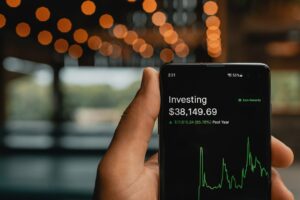Buy Now, Pay Later (BNPL) services have surged in popularity over the past few years, capturing the attention of consumers and retailers alike. These services allow shoppers to make purchases immediately while deferring payment over a set period, often without interest if paid on time. The convenience of BNPL appeals to a wide demographic, particularly younger consumers who may be wary of traditional credit cards.
With the rise of e-commerce and the increasing reliance on digital payment solutions, BNPL has become an attractive option for those looking to manage their finances more flexibly. The allure of BNPL services lies not only in their convenience but also in their perceived affordability. Many consumers appreciate the ability to break down larger purchases into manageable installments, which can make expensive items feel more accessible.
For instance, a new smartphone or a piece of furniture can be daunting financial commitments, but with BNPL, the cost can be spread out over several weeks or months. This model resonates particularly well with millennials and Gen Z, who often prioritize experiences and immediate gratification over long-term savings. As a result, BNPL services have become a staple in many online shopping experiences, seamlessly integrated into checkout processes across various platforms.
Hidden Fees and Interest Rates
While BNPL services often advertise themselves as interest-free, the reality can be more complex. Many providers impose hidden fees that can catch consumers off guard. For example, late payment fees can accumulate quickly if a consumer misses a deadline, leading to unexpected financial burdens.
Additionally, some BNPL services may charge fees for payment processing or account maintenance, which can add to the overall cost of the purchase. Consumers may find themselves paying significantly more than they initially anticipated if they do not read the fine print or fully understand the terms of service. Moreover, while many BNPL options are marketed as interest-free, this is not universally true.
Some providers may offer promotional periods during which no interest is charged, but once that period expires, high-interest rates can kick in. This can lead to a situation where consumers are left with a hefty bill that includes both the original purchase price and accrued interest. It is crucial for consumers to conduct thorough research and understand the specific terms associated with each BNPL service they consider using.
By doing so, they can avoid falling into financial traps that could undermine their budgeting efforts.
Impact on Credit Scores

The impact of Buy Now, Pay Later services on credit scores is another critical aspect that consumers should consider. Unlike traditional credit cards, which are reported to credit bureaus and can influence credit scores based on usage and payment history, many BNPL services do not report to credit agencies unless the account goes into default. This means that timely payments may not contribute positively to a consumer’s credit history, potentially limiting their ability to build credit over time.
However, if a consumer fails to make payments on time, the consequences can be severe. Late payments may be reported to credit bureaus, leading to a drop in credit scores that can affect future borrowing capabilities. This duality creates a precarious situation for consumers who may rely on BNPL services for immediate purchases without fully understanding the long-term implications on their credit health.
It is essential for users to weigh the short-term benefits against potential long-term consequences when deciding whether to utilize these services.
The Temptation of Overspending
| Metrics | Data |
|---|---|
| Total Expenses | 10,000 |
| Total Income | 8,000 |
| Credit Card Debt | 5,000 |
| Savings | 2,000 |
One of the most significant risks associated with Buy Now, Pay Later services is the temptation to overspend. The ability to make purchases without immediate financial repercussions can lead consumers to buy items they might not have otherwise considered. This phenomenon is particularly pronounced during sales events or holiday seasons when retailers heavily promote BNPL options as a way to entice shoppers.
The psychological effect of being able to “afford” more than one typically would can lead to impulsive buying behavior. For instance, a consumer might enter an online store intending to purchase a single item but end up filling their cart with multiple products due to the ease of using BNPL. This behavior can create a cycle of debt where individuals find themselves struggling to keep up with multiple payment plans for various purchases.
The initial thrill of acquiring new items can quickly turn into financial stress as consumers grapple with managing their budgets and meeting payment deadlines. Awareness of this tendency is crucial for anyone considering BNPL services; understanding personal spending habits can help mitigate the risk of overspending.
Late Payment Consequences
The consequences of late payments in Buy Now, Pay Later arrangements can be severe and multifaceted. When consumers miss a payment deadline, they often face immediate financial penalties in the form of late fees. These fees can vary significantly between providers but can add up quickly, especially if multiple payments are missed.
In some cases, these late fees can exceed what would have been paid in interest on a traditional credit card, making BNPL seem less appealing in hindsight. Beyond financial penalties, late payments can also lead to more serious repercussions such as account suspension or even collections actions. If a consumer consistently fails to meet their payment obligations, the BNPL provider may report this behavior to credit bureaus, resulting in a negative impact on the consumer’s credit score.
This can hinder future borrowing opportunities and lead to higher interest rates on loans or credit cards due to perceived risk by lenders. Understanding these potential consequences is vital for consumers who choose to engage with BNPL services; being proactive about payment schedules and budgeting can help avoid these pitfalls.
Alternatives to Buy Now, Pay Later Services

For consumers seeking alternatives to Buy Now, Pay Later services, several options exist that may provide similar benefits without some of the associated risks. Traditional credit cards remain a popular choice for many shoppers; they offer flexibility in payment terms and often come with rewards programs that incentivize responsible use. Additionally, many credit cards provide consumer protections such as fraud protection and extended warranties on purchases.
Another alternative is personal loans, which allow consumers to borrow a specific amount of money upfront and repay it over time with fixed monthly payments. Personal loans typically come with lower interest rates than those associated with late payments on BNPL services and can be used for larger purchases or consolidating existing debt. Furthermore, some retailers offer financing options directly through their stores or websites that may provide more favorable terms than third-party BNPL providers.
Exploring these alternatives can empower consumers to make informed financial decisions that align with their long-term goals.
Consumer Protection and Regulation
As Buy Now, Pay Later services continue to grow in popularity, regulatory bodies are beginning to take notice and implement measures aimed at protecting consumers. In various jurisdictions, lawmakers are exploring regulations that would require greater transparency from BNPL providers regarding fees and terms associated with their services. These regulations aim to ensure that consumers are fully informed before entering into agreements that could impact their financial well-being.
In addition to transparency requirements, there is also a push for regulations that would limit the amount of debt consumers can incur through BNPL services. By establishing guidelines around responsible lending practices, regulators hope to prevent consumers from falling into cycles of debt that could lead to financial distress. As these discussions evolve, it will be essential for consumers to stay informed about their rights and protections when using BNPL services and advocate for regulations that promote fair lending practices.
Responsible Use of Buy Now, Pay Later Services
To navigate the complexities of Buy Now, Pay Later services effectively, consumers must adopt responsible usage practices. This begins with thorough research into different providers and their terms before committing to any service. Understanding the specific fees associated with each option and how they align with personal financial goals is crucial for making informed decisions.
Additionally, setting a budget before utilizing BNPL services can help mitigate the risk of overspending. Consumers should assess their current financial situation and determine how much they can afford to spend without jeopardizing their ability to meet payment deadlines. By treating BNPL as a budgeting tool rather than an opportunity for impulsive purchases, individuals can enjoy the benefits of these services while minimizing potential pitfalls.
Furthermore, maintaining open communication with BNPL providers is essential if financial difficulties arise. Many companies offer options for restructuring payments or providing temporary relief for customers facing hardship. By proactively addressing issues rather than ignoring them, consumers can better manage their financial obligations and avoid negative consequences associated with late payments or defaults.
In conclusion, while Buy Now, Pay Later services offer appealing benefits such as convenience and flexibility in purchasing power, they also come with inherent risks that require careful consideration and responsible management by consumers.
FAQs
What are Buy Now, Pay Later services?
Buy Now, Pay Later (BNPL) services are payment options that allow consumers to make purchases and pay for them in installments over time, typically with no interest or fees.
How do Buy Now, Pay Later services work?
When using a BNPL service, a consumer can select the option at checkout and then make a down payment, if required. The remaining balance is then paid off in equal installments over a set period of time.
What are the benefits of using Buy Now, Pay Later services?
Some benefits of using BNPL services include the ability to make purchases without having to pay the full amount upfront, the option to spread out payments over time, and in some cases, the absence of interest or fees.
What are the potential drawbacks of using Buy Now, Pay Later services?
Potential drawbacks of using BNPL services include the temptation to overspend, the risk of incurring late fees if payments are missed, and the potential impact on credit scores if payments are not made on time.
How do Buy Now, Pay Later services impact personal finances?
Using BNPL services can impact personal finances by affecting cash flow, potentially leading to increased debt if payments are not managed carefully, and influencing credit scores if payments are not made on time.
What should consumers consider before using Buy Now, Pay Later services?
Before using BNPL services, consumers should consider their ability to make timely payments, the impact on their overall budget, and the potential long-term financial implications of using this payment option.




